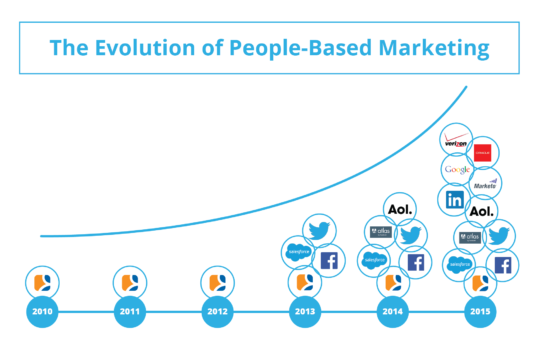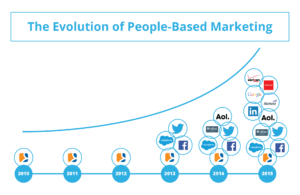LiveIntent Talk International Plans For Product Roll-Up & Jason Kelly Hire
by Sonja Kroll on 25th Jan 2016 in News

Email seems to be an unlikely channel for programmatic advertising, yet LiveIntent has seen significant growth recently. Maybe precisely because the ad tech community so far has overlooked the capabilities of email as a programmatic channel. In 2015, LiveIntent finalised a number of acquisitions and bagged a massive investment round. Now the email platform is appointing former Millennial Media president Jason Kelly to head up sales and marketing. ExchangeWire talked to Dave Hendricks, president and managing director LiveIntent UK, (pictured below) about what the acquisitions mean for LiveIntent, the chances and challenges of email ad monetisation, and the next steps for 2016.
LiveIntent made news last year with a recent funding round of USD$32.5m (£22.9m), resulting in the acquisitions of Mojn in Denmark and Avari in Germany. How have those acquisitions added to the existing European LiveIntent offering?
 Both the acquisition of Mojn and the addition of the Avari team are additive to LiveIntent’s worldwide commercial offerings. But, as importantly, these two groups are very additive from a technical and personnel perspective. With the acquisition of Copenhagen-based Mojn, we gained a CTO in Carsten Hyldahl. Carsten has been focused on the intersection of email and identity since he co-founded Mojn with Thomas Jensen, who was the CEO of Mojn and who is now SVP of business development for LiveIntent. Thomas has joined the London-based LiveIntent Limited organization that I lead; and with him we also gained a skilled team already in London that is well-versed in email and data on-boarding, the foundations of the ‘identity graph’ – a topic you will hear a lot more about this year.
Both the acquisition of Mojn and the addition of the Avari team are additive to LiveIntent’s worldwide commercial offerings. But, as importantly, these two groups are very additive from a technical and personnel perspective. With the acquisition of Copenhagen-based Mojn, we gained a CTO in Carsten Hyldahl. Carsten has been focused on the intersection of email and identity since he co-founded Mojn with Thomas Jensen, who was the CEO of Mojn and who is now SVP of business development for LiveIntent. Thomas has joined the London-based LiveIntent Limited organization that I lead; and with him we also gained a skilled team already in London that is well-versed in email and data on-boarding, the foundations of the ‘identity graph’ – a topic you will hear a lot more about this year.
The Berlin-based Avari team brings more product expertise in Karsten Rieke and Christoph Brunte, who, along with their team, have developed cutting-edge real-time email technologies that are driven by user engagement. They are powering product recommendations and social feeds that are activated when you open the email that contain them. The ability to place a product recommendation in an email is closely tied to our ability to create an identity graph which spans display and email.
These moves represent LiveIntent’s evolution globally. We are now so much more than our original mission: buying and selling ads in email. We are helping brands and publishers market and advertise to people, not pixels, across devices, wherever they are paying attention. To this end, the additions of Mojn and Avari bring people, products and technologies that not only expand our commercial footprint in the EU, they also will expand our global footprint with marketers and publishers who are looking for a reliable way to solve reaching people in a cross-device world.
Given the growth of ad blocking and ad fraud, do you think email ad monetisation is going to be a big growth area for premium publisher ad revenue in 2016?
Publishers in the EU are just as concerned with the effects of adblockers as their compatriots in the US. Brands in the EU also want to avoid spending money on non-human robots who consume ads on websites. Email ad monetisation is largely unaffected by these issues because it is consumed by opt-in consumers who are largely human. They don’t block email ads, they actually opt-in to receive newsletters that contain them. Don’t like the newsletter? Unsubscribe.
I moved from president of LiveIntent to become the managing director of LiveIntent Ltd in the EU because I believe that publishers and brands in the EU will adopt email ad monetisation as a response to declining web display revenue due to blockers. Email is the killer app of the internet, not only because everyone knows how to use it, but because it also serves as an important authentication and log-in protocol. Once you start understanding that ‘email is not about sending email’, but that email is about identity and ‘intent’, you can see why placing LiveIntent tags in your outbound email is the best way to start building your own identity graph. Once you have built an identity graph around your valuable email subscribers, you create many opportunities for your brand or media company. This is a substantial advance beyond cookies, which don’t travel cross-device or cross-browser very well.
Has it been difficult building demand from agencies and marketers in the European market for automated email ad buying?
Marketers are justifiably skeptical when a new entrant brings a new product to the table. Even in this fast moving and innovative industry, change comes slowly. But EU Agencies and marketers who have used LiveIntent love our 99% human audience so much that they rarely tell anyone else about how effective we are. Those same agencies and marketers have been renewing and increasing their budgets so quickly that LiveIntent Ltd grew more than 100% in the fourth quarter of 2015 and have committments to double again in Q1 2016.
LiveIntent sees itself a people-based marketing solution. How are you competing the Google and Facebook deterministic data?
 LiveIntent have been in the ‘people-based marketing’ business since our inception – we have always been built around a base of deterministic data. There was no company that was happier than LiveIntent when Facebook introduced ‘Custom Audiences’, because it was a validation of the concept that marketers could use their first-party data (aka email subscription data) to buy media more effectively than they could with algorithms and cookies. When that concept is validated, LiveIntent is inherently validated with it. When Google introduced ‘Customer Match’ in 2015, we saw that as further validation that ‘email means intent’. Google knows that login data is a great signal and can improve search results.
LiveIntent have been in the ‘people-based marketing’ business since our inception – we have always been built around a base of deterministic data. There was no company that was happier than LiveIntent when Facebook introduced ‘Custom Audiences’, because it was a validation of the concept that marketers could use their first-party data (aka email subscription data) to buy media more effectively than they could with algorithms and cookies. When that concept is validated, LiveIntent is inherently validated with it. When Google introduced ‘Customer Match’ in 2015, we saw that as further validation that ‘email means intent’. Google knows that login data is a great signal and can improve search results.
This quarter, LiveIntent is launching integrations with Salesforce and Oracle, both based on the power of first-party email hash data. These integrations will provide more than 10,000 marketers to use their deterministic email data to power retargeting campaigns across the more than 1000 publishers who use LiveIntent in their newsletters. That will be compelling and certainly competitive to Facebook and Google.
Jason Kelly was announced as the new president of LiveIntent this week. Will this help build LiveIntent's profile with global premium publishers?
Jason Kelly is an important senior addition to the LiveIntent team, and he’ll be leading the global sales and marketing function. His successes at Millennial Media, Sociomantic and AdMeld have given him the experience to help us grow and expand into markets that we have not entered yet. If you look at his background, he has been instrumental in several other successful publisher-side technologies that have been adopted and acquired by large global companies. And while Jason will be very helpful in gaining market share and adoption, he will also free up other members of the senior executive team to further specialise. Jason’s arrival is a signal to the market that we are going to scale globally now.
Can you give some high-level global ambitions for LiveIntent in 2016?
2016 is the first real ‘global’ year for LiveIntent, as evidenced by the acquisitions and our establishment of an EU headquarters in London, where we already have 15 people. Our first Point of Order will be to build a strong base of EU platform partners – typically large publishers or brands who have an existing and healthy email marketing program driving customer reach. Because our platform benefits its members when multiple publishers and brands are on board, we’ll be looking to sign up all the major media holding companies and household brands, similar to what we’ve done in the US, where we are now reaching more than 120 million monthly unique email subscribers via more than 1000 platform partners like Wal-Mart, Meredith and the NY Times. LiveIntent simply wants to show marketers around the world that ‘email is about more than sending email’ by providing a smarter way to market and advertise to people, not pixels. If harnessed, email-derived first-party data can connect brands, publishers and their fans better than any method that’s come before.
Ad BlockingEMEAProgrammaticPublisher








Follow ExchangeWire